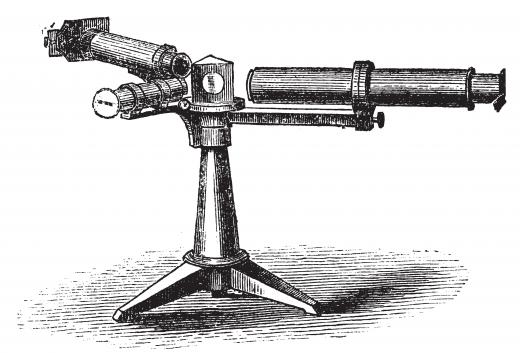What is Gallium?
 Malcolm Tatum
Malcolm Tatum
Gallium is a chemical element that is not among the elements found in nature, but it is easily obtained when metal is smelted. Characterized by a silver hue, this element is generally classified as a poor metal due to the fact that it becomes quite brittle at lower temperatures. It also has demonstrated a tendency to liquefy or melt slightly in higher temperatures. As such, gallium is not considered suitable for many of the applications that are common with other metallic elements.
This element was first identified by Lecoq de Boisbaudran in 1875 while he was working with a sample of zinc blend that was secured from the Pyrenees. While using a spectroscope to examine the sample, de Boisbaudran noted the presence of two purplish lines with the spectrum. The qualities of this new discovery were in line with predictions for new elements that had been documented in Mendeleev’s periodic theory several years earlier. Further experimentation allowed de Boisbaudran to obtain gallium through a process involving electrolysis. Upon verification of his research, the new element was given its name and awarded the atomic number 31.

When exposed to low temperatures, gallium exhibits crystalline qualities that are similar to glass compounds, but without their strength. In fact, the element can shatter if the temperature drops sufficiently. In spite of this drawback, it does possess properties that make it an ideal semiconductor. Diodes benefit from its presence, while transistors can be manufactured more efficiently and cheaply with the use of the element. As a replacement for crystalline silicon in the manufacture of solar panels, gallium promises to make the production of this important form of alternative energy more accessible.

Among the various chemical elements, gallium works very well with aluminum in creating useful alloys. For example, combining it with aluminum will effectively sever the bond between oxygen and hydrogen in water. Experimentation with a mixture of the liquefied element and tin suggest that the resulting alloy could be helpful in keeping the temperature of computer chips at acceptable levels. A combination with indium and tin is often used in medical thermometers today. Gallium nitrate, a common variant, is used for the production of oral medications and topical creams that help with arthritis. There is also research aimed at using this element as part of emerging dental technology.
AS FEATURED ON:
AS FEATURED ON:












Discussion Comments
You can get 15 grams on amazon for $27.
@omgnotagain – I forgot to mention gallium is pretty expensive. Right now, 10 grams will cost you $75. But if you use it correctly, a little bit will go a long way. And like you said, it’s beautiful, so the price is worth it.
Please always wear gloves and eye protection when you handle gallium! It is a little toxic. Also, don’t store it in a glass container, because it expands quite a bit when it solidifies, and might break the glass.
Melted gallium saturates glass and porcelain really well. I use it to stain glass and porcelain vases. It leaves an incredibly shiny silver finish.
@smartypantz – I looked at some pictures of gallium, and it’s beautiful! I’d love to hear how you use it in your artwork. Where can I buy some? I’m looking for some new art materials and I think gallium would be fun to play with.
@kangaBurg – I use gallium in my artwork, so I can answer your questions. The metal melts at 85.7 degrees Fahrenheit (about 13 degrees above room temperature), and boils at around 4,357 degrees Fahrenheit.
It is a little toxic. I wear gloves when I work with it. I hear that more toxicity tests need to be done in order to properly determine how toxic gallium actually is.
What are the melting and boiling points of gallium? Is it toxic? I have to write a paper on gallium, so any information is helpful.
i love wise geek! so helpful with school assignments!
Post your comments